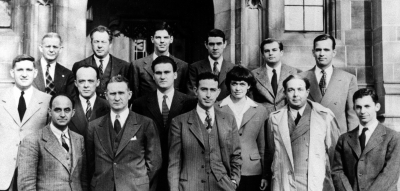
Situated safely in the United States, in 1939, Fermi was appointed professor of physics at New York’s Columbia University. While there, Fermi discovered that if uranium neutrons were emitted into fissioning uranium, they could split other uranium atoms, setting off a chain reaction that would release enormous amounts of energy. His experiments led to the first controlled nuclear chain reaction in Chicago, on December 2, 1942, under Chicago’s athletic stadium.
Subsequently, during World War II, Fermi became one of the principal leaders on the Manhattan Project, which focused on the development of the atomic bomb. To further his commitment to his new country, Fermi and his wife became American citizens in 1944.
After the war, Fermi was appointed to the General Advisory Committee for the Atomic Energy Commission. In October 1949, the commission met to discuss the development of the hydrogen bomb. Fermi was appalled at the prospect, however, and later co-authored an addendum to the committee’s report condemning the H-bomb in the harshest language. When President Harry S. Truman ordered the development of the bomb—ignoring Fermi’s and others’ warnings—Fermi returned to Los Alamos, New Mexico, to help with the calculations, hoping to prove that making a superbomb wasn’t possible.
Picture Credit : Google




